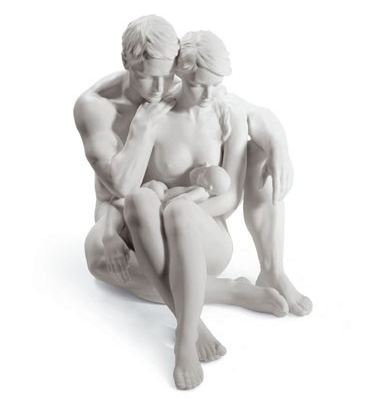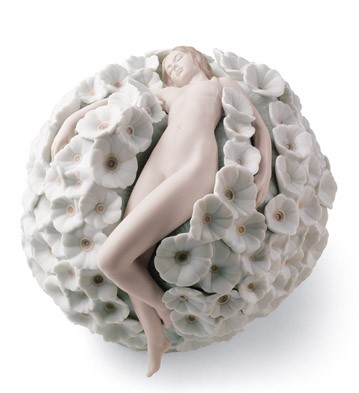Lladró - Artistic Porcelain
Lladró was born in the mid-1950s as a small family workshop in Almácera, a tiny farming community near the city of Valencia, on Spain's eastern Mediterranean coast. Born into a humble farming family, the brothers Juan, José and Vicente decided to dedicate their free time to making ceramics as a means of improving their prospects for the future. They enrolled in the Valencia School of Arts and Crafts, where Juan and José studied drawing and painting, while the youngest brother, Vicente, took up sculpture.
In order to put their new knowledge into practice, they built a Moorish-style kiln in the patio of their parents' home. As their experiments became increasingly successful, they began manufacturing and selling their first ceramic flowers on the local market. Meanwhile, they had started to design and produce their own figurines in porcelain.
In 1958 they moved from their small workshop in the family home in Almácera to a factory located in the nearby town of Tavernes Blanques. The 1960s were years of strong growth and development. In fact, the studios in Tavernes were enlarged seven times until in 1969 the foundations were laid for what was to become Porcelain City, the home of Lladró porcelain art today. For over two decades since that time, Lladró has continued to spread throughout the world, fueling growth back home in tiny Tavernes. Today, with a headcount of two thousand people, Lladró markets its creations in over one hundred countries around the world.
Lladró was born in the mid-1950s as a small family workshop in Almácera, a tiny farming community near the city of Valencia, on Spain's eastern Mediterranean coast. Born into a humble farming family, the brothers Juan, José and Vicente decided to dedicate their free time to making ceramics as a means of improving their prospects for the future. They enrolled in the Valencia School of Arts and Crafts, where Juan and José studied drawing and painting, while the youngest brother, Vicente, took up sculpture.
In order to put their new knowledge into practice, they built a Moorish-style kiln in the patio of their parents' home. As their experiments became increasingly successful, they began manufacturing and selling their first ceramic flowers on the local market. Meanwhile, they had started to design and produce their own figurines in porcelain.
In 1958 they moved from their small workshop in the family home in Almácera to a factory located in the nearby town of Tavernes Blanques. The 1960s were years of strong growth and development. In fact, the studios in Tavernes were enlarged seven times until in 1969 the foundations were laid for what was to become Porcelain City, the home of Lladró porcelain art today. For over two decades since that time, Lladró has continued to spread throughout the world, fueling growth back home in tiny Tavernes. Today, with a headcount of two thousand people, Lladró markets its creations in over one hundred countries around the world.
Lladró continues the grand tradition of porcelain making, preserving artistic techniques of classic 18th-century European styles, and reaching back to China's millennial heritage which has given us some of the most delicate works of art in history.
Perhaps China's greatest gift to the world was the way it combined simple clay with "secret ingredients" to create a material which was both beautiful and practical: porcelain. It is believed that porcelain first appeared during the Tang dynasty (618-906).
Marco Polo's seventeen-year stay in China in the late 11th century had a great impact on European culture. As an example, purchasing porcelain "objets d'art" became an obsession with European aristocrats.
Porcelain was viewed by European royalty as a highly desirable luxury product, a fitting way to pay themselves homage. This increase in demand occurred precisely at a time when the manufacture of imperial porcelain in China was becoming problematic. Product costs were soaring, pilferage was rampant, and materials were in short supply.
The porcelain market looked insatiable. Foreign tradesmen had great difficulties overcoming Chinese reluctance to maintain supplies, bent as the Chinese were on preserving the secret of porcelain manufacturing. Meanwhile, in Vienna, Venice and other European cities, attempts were being made to create what was to become European porcelain.
In the 1940s, the Lladró brothers revisited the history of porcelain manufacturing, creating their own formula for porcelain paste and refining their manufacturing techniques on all fronts: pigments, molds, varnishes, and firing times, resulting in pieces that not only incorporate great beauty, but emphasize quality of the highest kind.
.jpg)
.jpg)
.jpg)
.jpg)
.jpg)
.jpg)
.jpg)
.jpg)
.jpg)
.jpg)
.jpg)
.jpg)
.jpg)
.jpg)
.jpg)